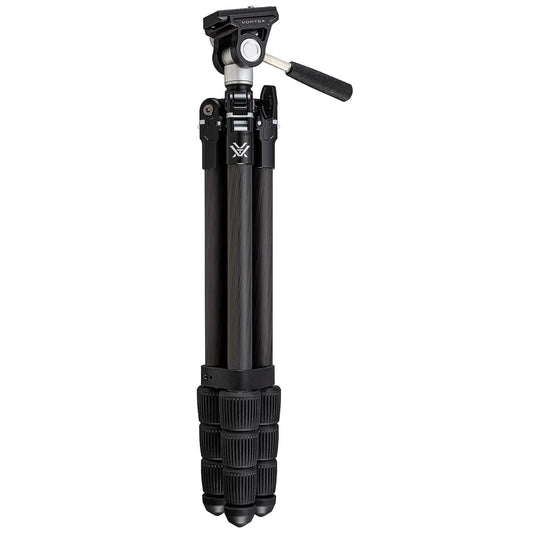

When you're on the go, the Vortex Summit Carbon II Tripod Kit TR-SMC is your ultimate companion for precision shooting and optimal optical support. Weighing in at just 2.5 lbs, this incredibly portable tripod can handle loads up to 22 lbs, making it perfect for serious photographers and hunters alike. The sturdy combination of carbon fiber and aluminum construction ensures durability without the bulk, ensuring you never have to compromise stability for weight.
With its easy-to-use quick release plate and detachable counterweight hook, setting up for that perfect shot has never been simpler. Whether you're capturing long-range landscapes or fine details, the Summit's adjustable legs and height settings deliver versatility that matches your needs. The Vortex Summit Carbon II Tripod Kit is not just a tool; it's an essential part of your gear that enhances your outdoor adventures.
Features:
- LIGHTWEIGHT DESIGN for easy transport, making it perfect for hiking and travel.
- HEAVY-DUTY SUPPORT allows a maximum load of 22 lbs, accommodating various equipment.
- CUSTOMIZABLE HEIGHT adjustable from 18.1 to 53.3 inches, ensuring you can shoot from any angle.
- QUICK RELEASE PLATE for fast setup and breakdown, saving you valuable time.
- DETACHABLE COUNTERWEIGHT HOOK for added stability in windy conditions.
- FOUR LEG SECTIONS provide exceptional flexibility and height adjustment.
- RUBBER PACKING STRAP keeps your gear secure during transport.
- STURDY MATERIALS combining carbon fiber and aluminum for reliability and performance.
Technical Specifications Table
| Specification | Details |
|---|---|
| SKU | TR-SMC-Vortex |
| UPC | 843829115100 |
| Maximum Load | 22 lbs |
| Weight | 2.5 lbs |
| Folded Height | 18.1 inches |
| Height | 53.3 inches |
| Color | Black |
| Material | Carbon Fiber |
What’s in the Box?
- Quick release plate
- Rubber packing strap
- Detachable counterweight hook
- 1.3mm Hex wrench
Customer Reviews
"The Summit tripod is a game-changer! Lightweight yet sturdy, perfect for my wildlife photography." - Alex H.
"I love how easy it is to set up and adjust. A must-have for any serious shooter!" - Rachel T.
FAQ
How does the Vortex Summit Carbon II compare to other tripods? The Summit stands out with its lightweight carbon fiber structure while still supporting heavy loads, unlike many other tripods in its class. This makes it ideal for users who need portability without sacrificing stability.
What maintenance is required for this tripod? To keep the Vortex Summit in top shape, regularly check the leg locks and clean the legs to remove dirt and debris. Proper care will extend the life of your tripod significantly.
Similar Models
If you're exploring quality tripods, check out the Vortex Pro GT Tripod for added features or the Vortex Razor HD Tripod for premium optics. Discover our full collection for exceptional gear tailored to elevate your adventures.
You May Also Like
Here’s some of our most similar products people are buying. Click to discover trending style.







